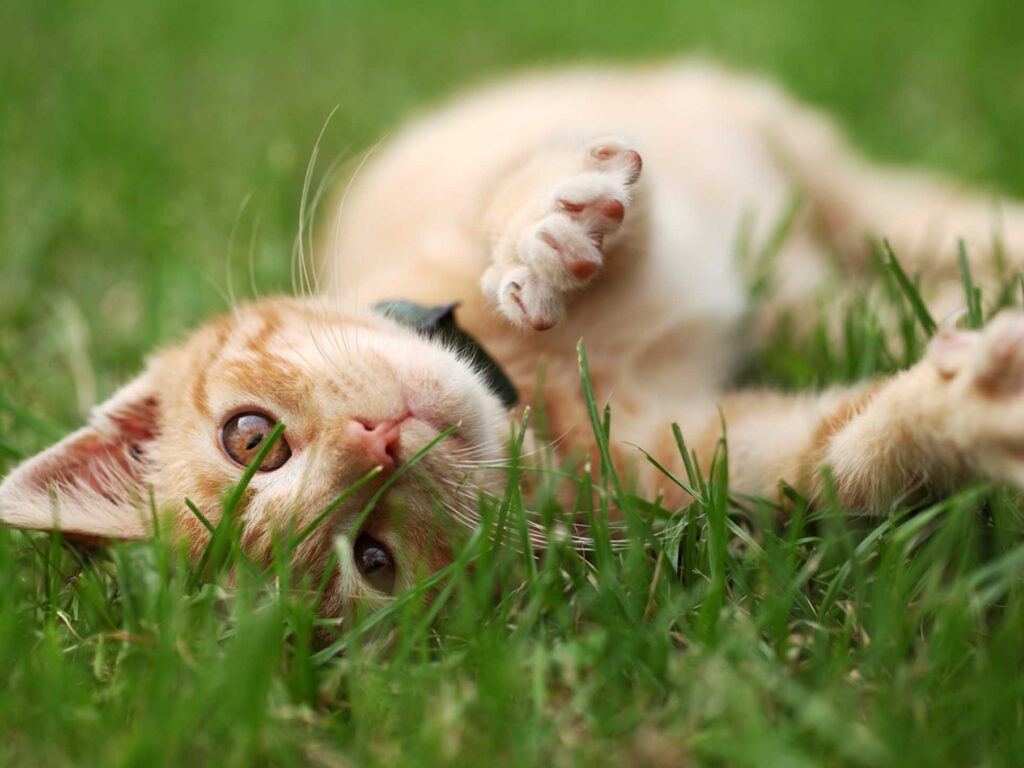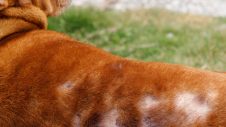Did you know that as well as being a major cause of illness in humans, skin cancer also affects pets?
With Australia having one of the highest rates of skin cancer in the world, and Queensland being the skin cancer capital of the world, pets are also at a high risk of developing skin cancer.
Our comprehensive guide below covers potential risk factors for your pet, signs and symptoms, as well as prevention tips, so you can keep your fur family sun safe.
Pets at risk: Identifying vulnerable companions
Pets with white coloured fur such as Dalmatians and short-haired breeds including Bull Mastiffs and Staffies fall into the high-risk skin cancer category.
When it comes to our feline friends, ginger and white cats are the most susceptible, with white cats 18 times more likely to develop skin cancer and ginger cats coming in a close second.
Pets with allergies or severe skin conditions also face an elevated risk as irritated skin can be more prone to developing cancers.

Signs and symptoms for early detection
Just as you keep an eye on your own skin for any changes to moles or freckles, being just as attentive to your pet’s skin for any changes in appearance is crucial for early detection.
Here are the top four signs pet parents should look out for:
- Sunburn, sun spots and less commonly melanomas
- Scabs that gradually increase in size
- Any raised spots on the skin
- Any scratches that are not healing (regardless of how small they may be)
On dogs, signs will often appear on pink skin, particularly on their stomach or on the inside of their thighs.
On cats, skin cancers are usually on the face, with the most common areas being on their head, eyelids, ears, nose and the region in front of their ears.
If you observe any irregularities, please get in touch with your local Greencross Vets clinic.
Prevention tips
- Annual skin checks: When you book your annual skin check, make sure you book your pet in for theirs at the same time, as regular veterinary check-ups are essential for early detection.
- “Slip” – sun suits: Consider protective clothing, such as sunsuits or rash guards, especially for high-risk dogs like Staffies, Bull Terriers and Dalmatians.
- “Slop” – pet sunscreen: Apply pet-safe sunscreen on exposed areas like ears, nose, muzzle, and pink skin. For dogs, consistent application is effective, while it is not advised to use sun cream on cats due to their grooming habits.
- Monitor problematic freckles and scratches: Stay vigilant for changes in freckles or scratches. For high-risk breeds, limit their sun exposure between 10am and 2pm.

Treatment options
If your pet is diagnosed with skin cancer, your local Greencross Vets team will provide advice around the best treatment options and may refer your pet to a specialist veterinary dermatologist for tailored care and treatment.
By keeping an eye on your pet’s skin and adopting sun-safety advice, you can ensure a happy and healthy life for your fur family.

 Greencross Vets
Greencross Vets 








